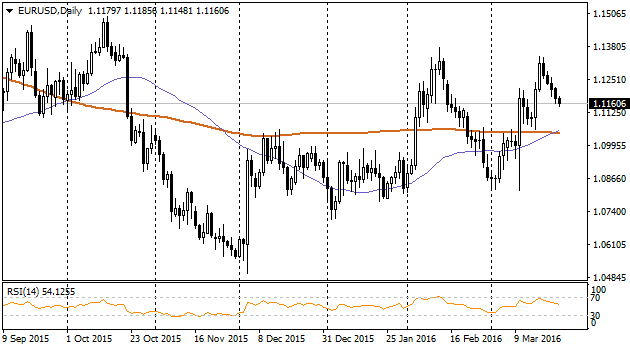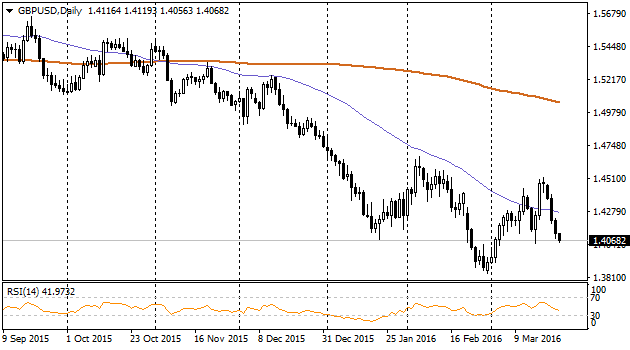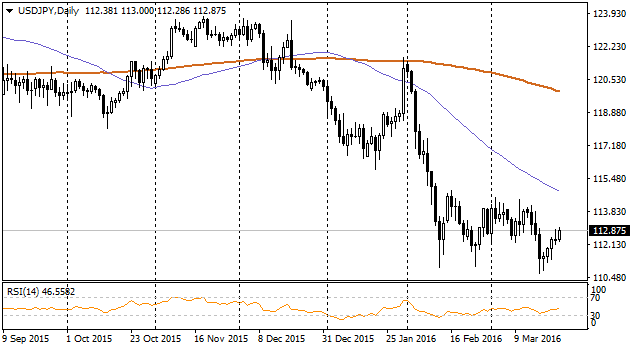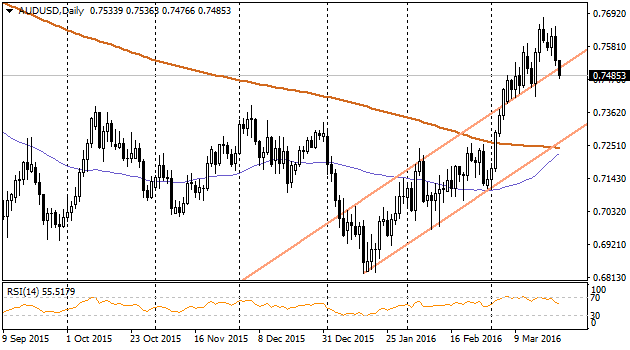The pair continues its slow upward movement. Market analysts emphasize that federal reserve officials insist on two rate increases against “less than one” during this year that is factored into interest rate futures quotes now. Though, remarkably steady downtrend of the pair after peaks on March 17 is visible from the first sight to the chart. Non-exchange character of Forex doesn't allow us to assess the volumes that came through this decline. But we assume they were quite significant.
Federal Reserve actually did not change its course, while ECB widen its QE program and decreased the rates. That means they created good conditions quite close to market reality in order to strengthen dollar and to press euro (To be honest, is it possible to talk about four rate raises per year while the market expects none?). Big players, probably, managed to convince market that EURUSD would continue growing. In practice, though, it could not fix even the February upper levels (1.1330). The wider outlook allows us to make the following conclusion. Starting from February 2015, more than a year already, the pair is reflecting difficulties in its growth. In this case even the upward movement over 200 moving average might be the next false break. Big investors will get high demand on euro offering it to the large swath as they could persuade the market in failure of ECB rate reduction policy and in insufficient hawk mood of FRS, opposed to fundamental factors.
Meanwhile, fundamental factors are the following: ECB suppresses the chart of profitability of risk free assets while FRS supported by healthy economic data is able to continue its line for monetary normalization. In case the committee is not accepting in April the tightening measures we will still experience new fomc campaign arranged to prepare markets for the further rate growth. Exactly the same they handled at the end of the last year. We want to remind that in October markets completely excluded the chances for the further rate increasing until the end of the year. Nevertheless, speeches of different officials again and again were changing such sentiments. As a result the rate increase in December was one of the most expected in the history. Though, this reassessment of expectations left its trace on EURUSD. Starting from October and till December it lost around 10 figures. And only part of those declines is connected to expectations of ECB monetary easing. Pair rebound after ECB decision release reflects that half of it (almost 5 figures) is caused by market reaction to rate increase expectations in December.
Obviously, market is not that simple. Weakness of Asian markets that we see during current week as well as low macroeconomic news releases may cause the real threat for FRS plans. So what news we have received lately from the USA? New Home sales added in February 2% after 7% drop in January that was actually forecasted. Decrease by 6.1% last year should not be considered as decline signs since during the year this indicator has been fluctuating widely but as a whole remained stable.

British pound continued its decrease yesterday almost during the day, and today this tendency brought the pair to the area of last week's lows – 1.4050. Options markets indicate more and more investors that are trying to hedge against possible currency drop if Britain decides to leave EU. Terrorist attacks in Brussels gave more points to investors to predict brexit. Economic indicators are now considered as secondary factors though this week we have enough news releases. Apart from CPI issued two days earlier, today retail sales data will be announced. January data surprised markets with the monthly increase by 2.3% up to yearly 5.2%. February data are forecasted with the small correction by 0.7%. Besides this statistics BBA will release Mortgage Approvals. Last month was signed with the unexpectedly sharp bound that crossed out downtrend developing since last August. As well we can check the retail sales balance issued by the Confederation of British Industry. Though the biggest impact for the markets today, probably, will have US indicators. They will be released at the end of European session before long weekend while many European markets will be closed for Easter holidays. It's quite important for British currency to be fixed higher 1.40 in a short-term perspective. This will help to resist psychological pressure before the next week when new Brexit surveys is published.

Overall American currency growth and markets decline have not influenced decrease in USDJPY. Despite of the general correlation, yen continued to set back against dollar, getting upper yesterday's intraday highs and reaching currently mark of 113. That can be explained by Bullard's speech, FOMC member, who notified about reasons for the rate increase in April. Hence, current movements on the market are totally caused by USD raise and are not indicating the escape of risky assets.

AUDUSD
Australian dollar rally is testing itself. The pair was not able to beat the local highs, and appeared today lower than 0.7500. This was the first serious signal to the break of fast growing trend. At the moment the pair occupies the former resistance line of the uptrend channel. To be sure in developing downtrend we need to witness the loss of one more figure by Australian currency from the current levels. Though, traders should find the reason for such movements. This week all the significant news will be released from the United States. Today's announcement of Unemployment Claims and Core Durable Goods Orders will be followed by tomorrow's GDP US data in the 4th quarter that will boost a bit slow trades.
